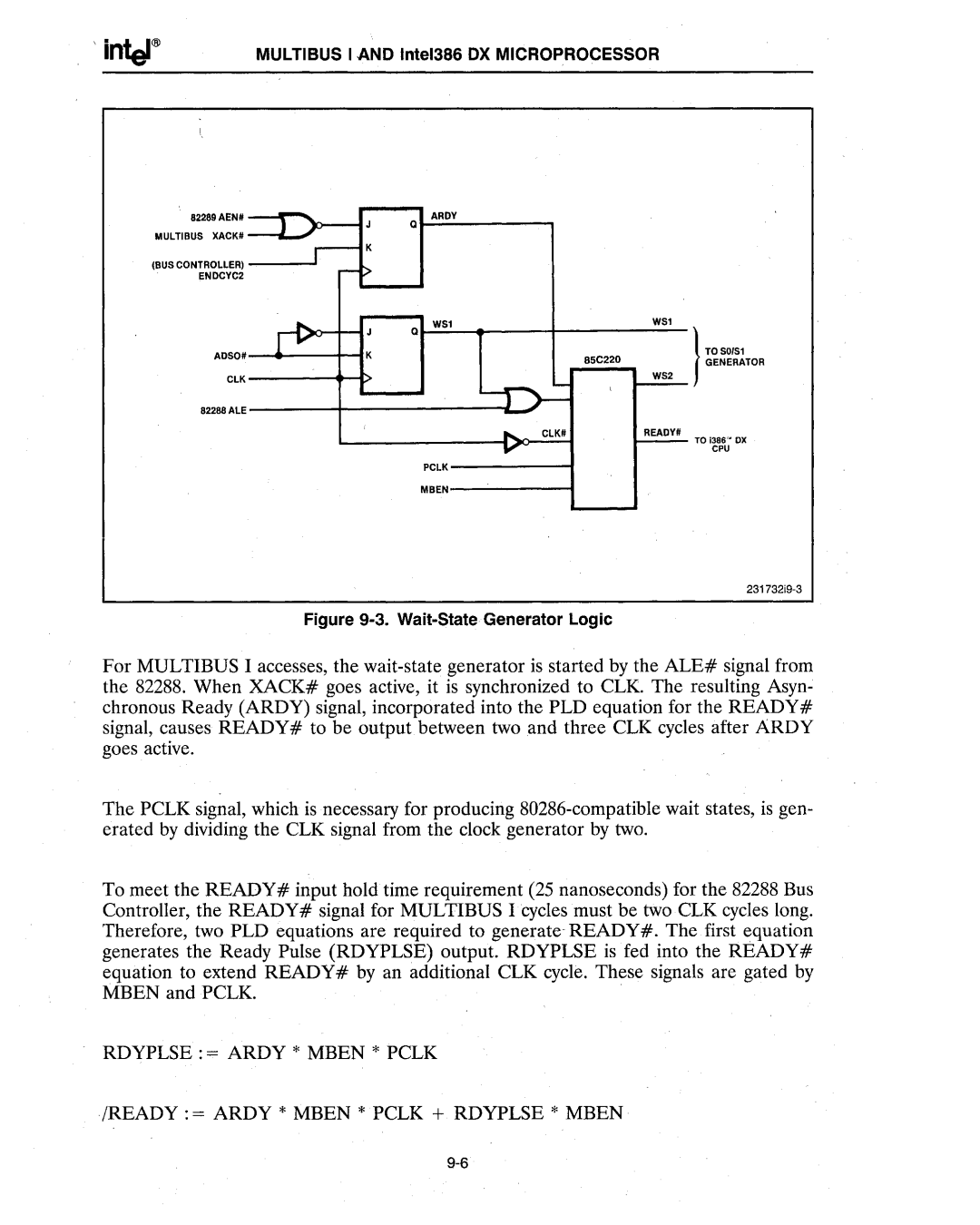
MULTIBUS I AND Intel386 OX MICROPROCESSOR
82289AEN# | Q ARDY |
|
|
| ||
MUlTlBUS XACK# |
| r - K |
|
|
|
|
(BUS CONTROllER) |
|
|
|
|
| |
ENOCYC2 |
|
|
|
|
| |
| ~ |
| WS1 |
|
| WS1 |
| KJ | Q |
|
|
| |
ADSO# |
|
| 85C220 | TOSO/S1 | ||
|
|
|
|
| GENERATOR | |
ClK |
|
|
| WS2 I | ||
82288 ALE |
|
|
|
| ||
|
|
| ...... | ClK# |
| I |
|
|
| .... |
| READY# | |
|
|
|
|
| CPU | |
|
|
|
|
|
| |
PClK
MOEN
Figure 9-3. Wait-State Generator Logic
For MULTIBUS I accesses, the
The PCLK signal, which is necessary for producing
To meet the READY# input hold time requirement (25 nanoseconds) for the 82288 Bus Controller, the READY# signal for MULTIBUS I cycles must be two CLK cycles long. Therefore, two PLD equations are required to generate READY#. The first equation generates the Ready Pulse (RDYPLSE) output. RDYPLSE is fed into the READY# equation to extend READY# by an additional CLK cycle. These signals are gated by MBEN and PCLK.
RDYPLSE : = ARDY * MBEN * PCLK
/READY : = ARDY * MBEN * PCLK + RDYPLSE * MBEN
